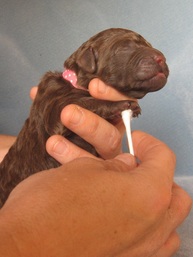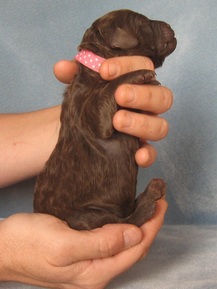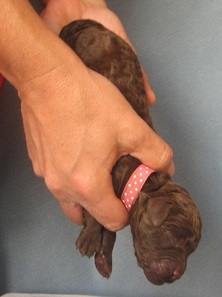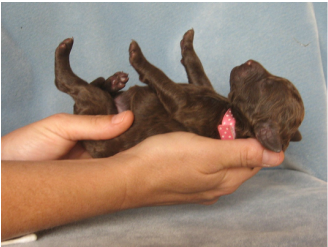Early Neurological Stimulation (ENS) : The U.S. Military in their canine program developed a method that still serves as a guide to what works. In an effort to improve the performance of dogs used for military purposes, a program called Bio Sensor or Neurological Stimulation (ENS) was developed. Later, it became known to the public as the Super Dog Program. Based on years of research, the military learned that early neurological stimulation exercises could have important and lasting effects. Their studies confirmed that there are specific time periods early in life when neurological stimulation has optimum results. The first period involves a window of time that begins at the third day of life and lasts until the sixteenth day. It is believed that because this interval of time is a period of rapid neurological growth and development, and therefore is of great importance to the individual. The ENS program was also concerned with early neurological stimulation in order to give the dog a superior advantage. Its development utilized six exercises, which were designed to stimulate the neurological system. Each workout involved handling puppies once each day. The workouts required handling them one at a time while performing a series of five exercises. Listed in nor order of preference the handler starts with one put and stimulates it using each of the five exercises. The handler completes the series from beginning to end before starting with the next pup. The handling of each pup once per day involves the following exercise
|
1. Tactile stimulation -holding the pup in one hand, the handler gently stimulates (tickles) the pup between the toes on any one foot using a Q-tip. It is not necessary to see that the pup is feeling the tickle. Stimulation 3-5 sec
|
2. Head held erect -using both hands, the pup is held perpendicular to the ground, (straight up), so that its head is directly above its tail.This is an upwards position. Time of stimulation 3 - 5 seconds
|
3. Head pointed down -holding the pup firmly with both hands the head is reversed and is pointed downward so that it is pointing towards the ground. Time of stimulation 3 - 5 seconds
|
|
4. Supine position - hold the pup so that its back is resting in the palm of both hands with its muzzle facing the ceiling. The pup while on its back is allowed to sleep struggle. Time of stimulation 3-5 sec.
|
5. Thermal stimulation - use a damp towel that has been cooled in a refrigerator for at least five minutes. Place the pup on the towel, feet down. Do not restrain it from moving. Time of stimulation 3-5 sec.
|
Five benefits have been observed in canines that were exposed to the Bio Sensor stimulation exercises:
1. Improved cardio vascular performance (heart rate)
2. Stronger heart beats,
3. Stronger adrenal glands,
4. More tolerance to stress
5. Greater resistance to diseaseIn tests of learning,
stimulated pups were found to be more active and were more exploratory than their non-stimulated litter mates over which they were dominant in competitive situations.here to edit.
1. Improved cardio vascular performance (heart rate)
2. Stronger heart beats,
3. Stronger adrenal glands,
4. More tolerance to stress
5. Greater resistance to diseaseIn tests of learning,
stimulated pups were found to be more active and were more exploratory than their non-stimulated litter mates over which they were dominant in competitive situations.here to edit.








